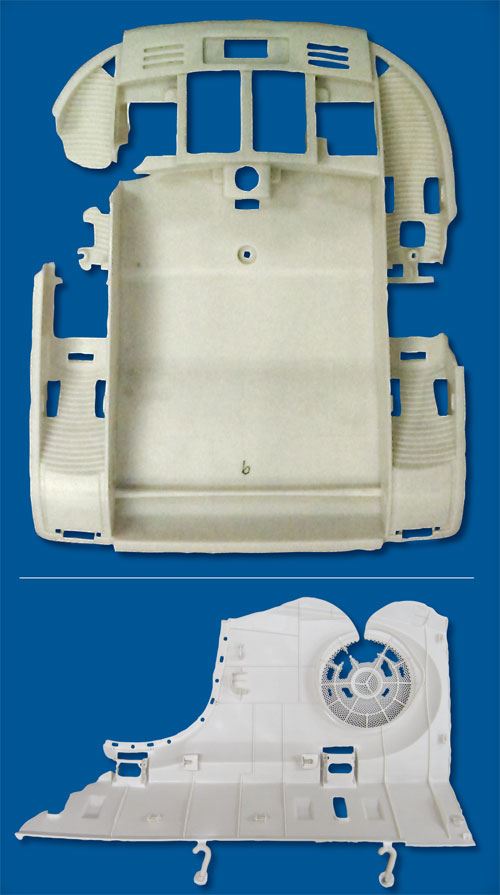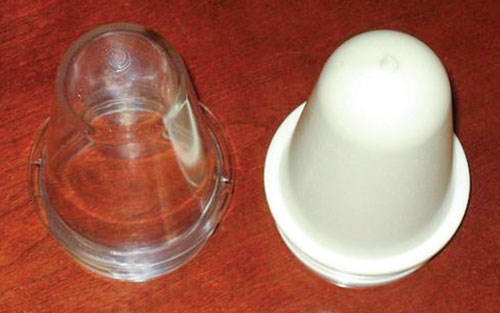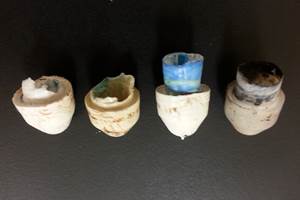Tips and Techniques: Break the Taboo On Purging Hot Runners!
It’s safe to say that the concept of using a commercial purging compound (CPC) has largely been embraced by the plastics processing community.
It’s safe to say that the concept of using a commercial purging compound (CPC) has largely been embraced by the plastics processing community. But using a CPC to clean injection molding hot-runner systems still remains somewhat taboo. This is evidenced by the continuing reluctance of some processors to put anything other than resin through their hot runners. This is usually a result of either never having attempted to use a CPC to clean their hot-runner tooling, or they have used a CPC and got less than stellar results.
If you’re in the latter group, don’t accept defeat. If in the former, dare to break the taboo! More and more suppliers are formulating grades of CPCs designed for hot-runner use. It has also been proven that CPCs are generally more effective in removing color or carbon contamination than using plain resin, regrind, or home-made purges. This applies to hot runners as well.
To be sure, not all CPCs are suitable for purging hot runners. It is important to always check with the CPC supplier before attempting to purge a hot-runner system. It is likely that a CPC supplier will have a range of grades, so make sure that the grade you are using is suitable for this task. It is also important to take note of any particular hot-runner design issues that might prevent a CPC from performing at its best. Poorly designed runners with dead spots or sharp angles, for example, will be difficult to clean and can be a sticking point for the CPC itself. Here are some tips and recommendations that can help make hot-runner purging go as smoothly as possible.
GENERAL RECOMMENDATIONS
It’s often recommended to purge the screw and barrel first before purging the hot runners. This ensures that if there is any contamination in the barrel, it doesn’t get dragged into the hot runners and make cleaning that much more difficult. In some cases, if you’re certain that the screw and barrel are relatively clean, it may be acceptable to start cleaning the hot runners without purging the screw and barrel in order to save some time and material. But if there is any doubt, always clean the screw and barrel first.
Hot-runner temperatures, particularly gate temperatures, should be raised before purging in order to help loosen any deposits. Extra heat also helps improve flow of the purging compound. But take care when processing heat-sensitive resins, as raising temperatures may cause further degradation.
Verify if there are any hot-runner gate-clearance requirements for the CPC being used. If the CPC has any type of filler, then it will likely require larger gate clearances. A glass-filled CPC is not recommended for purging most hot-runner systems due to gate-clearance restrictions or potential damage to nozzle tips. Also, any effective CPC will remove carbonized resin or colorants, which could potentially block gates if their clearances are too small.
PURGING PROCEDURES
CPC suppliers recommend different procedures for purging hot runners. Some CPCs can be used with either a closed-mold or open-mold method of purging, and the method chosen depends on the resin(s) processed, mold design, and cleaning difficulty. Open-mold purging is usually sufficient for molds with fewer cavities, while higher-cavitation molds benefit more from closed-mold purging. “Moldability” of a purging compound is an important characteristic because closed-mold purging often provides better cleaning of the hot-runner system.
Moldable “mechanical” type purging compounds, which rely partly on the action of the machine (pressure and agitation) for their cleaning ability, rather than on chemical action, have been shown to work well with hot runners. The accompanying photos show various parts, some with fairly complex designs, that were molded directly out of Asaclean. They illustrate the fact that even complex molds with ribs, cams, and undercuts can be purged with an effective CPC designed for hot-runner cleaning.
Closed-mold purging tips:
- Inject the CPC using short shots whenever possible (approximately 50% shot size) to decrease the possibility of parts sticking in cavities. If a short shot cannot be molded for any reason, then it is important that the shrinkage rate of the CPC be similar to that of the processing resin to avoid parts getting stuck in the cavities.
- Use a CPC grade that is compatible with the processing resin being molded because greater compatibility ensures less residue left behind by the CPC.
- Spray the cavities with mold release between cycles.
- Turn off pack and hold velocities and pressures, but do not adjust pack and hold time.
- Eject CPC parts immediately while still warm.
Open-mold purging tips:
- Extrude the CPC through the hot-runner system starting at a medium velocity, then increase screw speed to the maximum safe level to achieve maximum cleaning.
- Once the CPC is flowing adequately through all the gates, inject air shots with the mold open.
A good CPC should leave low residue so that it lends itself to quick and efficient purging. Other measures can be taken to ensure that the CPC is quickly displaced from the hot-runner system so that excessive amounts of scrap and rejects are not generated. For mechanical-type CPCs, maximizing injection pressure and velocities while displacing the CPC will shorten displacement time and reduce displacement scrap. (On the other hand, because Asaclean is thermally stable, it can be left in the barrel and hot runners as a “shutdown and sealing” agent to prevent oxidation and subsequent carbonization.)
With valve gates, shut off all the gates (pins in closed position) and then purge troublesome gates individually. This allows greater pressure to be delivered to each gate for better cleaning (notably with a mechanical-type purging compound).
About the Author
John Pizzo is technical service & development manager for Sun Plastech Inc., part of Asahi Kasei Group, and the supplier of Asaclean purging compounds. He has been with Sun Plastech for over 13 years. Contact: (800) 787-4348; asaclean.com.
Related Content
Cast Acrylic Purging Compound
Mechanical purging compound comes in granulate form, enhancing handling, storage and grittiness for cleaning.
Read MoreAsahi Kasei Plastics North America Merges with Asahi Kasei Asaclean Americas
Merged entity to further boost best-in-class manufacturing services.
Read MorePolySource Enters into Exclusive Distribution Partnership with Asaclean Purging Compounds
This strategic alliance is expected to enhance resin distribution efficiency and customer success.
Read MoreHow to Start a Hot-Runner Mold That Has No Tip Insulators
Here's a method to assist with efficient dark-to-light color changes on hot-runner systems that are hot-tipped.
Read MoreRead Next
Novel Two-Stage Approach Makes Purging Hot Runners a Breeze
Two new and unusual compounds have been developed to ease the challenge of purging injection molding hot-runner systems.
Read MoreWhy (and What) You Need to Dry
Other than polyolefins, almost every other polymer exhibits some level of polarity and therefore can absorb a certain amount of moisture from the atmosphere. Here’s a look at some of these materials, and what needs to be done to dry them.
Read MoreHow Polymer Melts in Single-Screw Extruders
Understanding how polymer melts in a single-screw extruder could help you optimize your screw design to eliminate defect-causing solid polymer fragments.
Read More



























